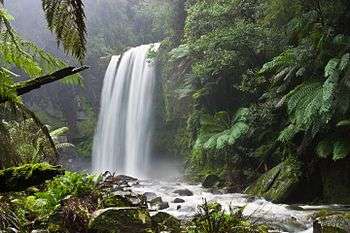Landscape-scale conservation
Landscape-scale conservation is a concept that has arisen in response to both the challenges of climate change and a perceived excessive focus on site based conservation. It aims to take a holistic approach, looking not just at biodiversity issues, but also issues such as local economies and agriculture, eco-tourism, geodiversity and the health and social benefits of the environment.
Island biogeography
From an ecological perspective the principles of the approach owe much to the application of island biogeography. Key reservoirs of biodiversity in the landscape are identified (including designated sites). Opportunities to link, complement or expand these sites are sought with the emphasis on the role of natural processes in their management.
Among the leading exponents of UK landscape scale conservation are the Areas of Outstanding Natural Beauty (AONB). There are 49 AONB in the UK. They have championed the "Protected Landscape Approach" that is a standard for all category 5 protected areas in the international hierarchy of protected areas as defined by the International Union for the Conservation of Nature (IUCN).[1]
The starting point for all landscape scale conservation schemes must be an understanding of the character of the landscape. Landscape character goes far beyond an appreciation of an area's visual attractiveness. It involves a deep understanding of how the landscape functions to support internal and external communities, cultural heritage and development, local and macro economies as well as the wildlife and natural resources of the area. Landscape character requires careful assessment according to accepted methodologies. Landscape character assessment will contribute to the determination of what scale is appropriate in which landscape. "Landscape scale" does not mean merely making things bigger, or acting at a bigger scale than previously: it has to mean that conservation is carried out at the correct scale and that it takes into account the human elements of the landscape, both past and present.
Natural sites
A key inspiration for this approach was the Oostvaardersplassen near Amsterdam, a huge wetland landscape that is managed largely through natural processes. These principles have been applied in the UK, such as on the Essex Coast at Abbot's Hall where managed retreat has been used to create new salt-marshes and coastal wetland.
Existing woodland
In recent years studies have been carried out across the UK looking at much wider range of habitats. In Wales the Pumlumon Large Area Conservation Project focusses on upland conservation in areas of marginal agriculture and forestry.[2] The North Somerset Levels and Moors Project addresses wetlands.[3] There are several woodland based initiatives, often focusing on increasing linkages between existing woodland. An unusual approach is being taken in the Black Country where Black Country Living Landscape is applying these principals to an urban area.[4]
Tool for adaptation
Landscape scale conservation is seen by some as an essential tool for adaptation to climate change, particularly in ensuring diverse and viable biodiversity in a changing landscape. To others in the UK it is more visionary, an opportunity to plan for a landscape which answers the needs of both people and wildlife in a crowded island.[5]
References
- ↑ "Protected Areas in the United Kingdom" by Phillips, A. and Partington, R. in "The Protected Landscape Approach: Linking Nature, Culture and Community" Brown, J, Mitchell, N & Beresford, M (Eds) (2005) IUCN, Gland, Switzerland. pp 119 - 130.
- ↑ http://www.montwt.co.uk/pumlumon.html
- ↑ http://www.avonwildlifetrust.org.uk/level1/level2/project_nslm.htm
- ↑ http://countdown2010.net/news/update/newsletter0604.html#focus
- ↑ http://www.english-nature.org.uk/pubs/publication/PDF/urbio7.pdf
